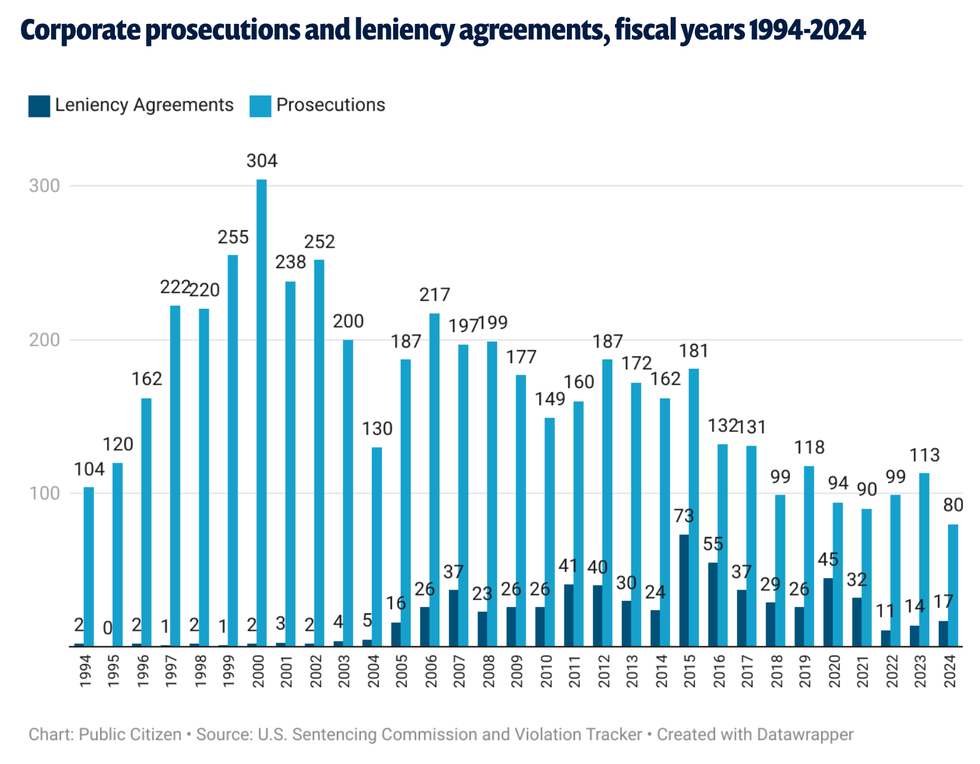The Federal Highway Administration (FHWA) has very quietly acknowledged that the Driving Boom is over, cutting its forecasted driving estimates by between 24 percent and 44 percent.
After many years of aggressively and inaccurately claiming that Americans would likely begin a new era of increased driving, the agency's latest forecast finally recognizes that the Driving Boom has given way to decades of far slower growth. The amount that the average American drove actually declined nearly 9 percent between 2004 and 2014, resulting in about a half trillion fewer total miles driven in 2014 than if driving had continued to increase at earlier rates.
The new forecast is a major departure from the FHWA's past record of chronically predicting aggressive and inaccurate increases in driving. An analysis of these projections showed that the Department of Transportation (USDOT) had issued 61 driving forecasts in a row that overshot their mark.
The FHWA's new forecast suggests that driving per-person will essentially remain flat. The benchmark is important because excessively high estimates of future driving are used to justify wasteful spending on new and wider highways. Meanwhile, policymakers pay little attention to repairing existing roads, and don't invest enough in other modes of travel.
"The agency plays the vital role of guiding decisions for future infrastructure investment," said Phineas Baxandall, Senior Analyst at the U.S. Public Interest Research Group (U.S. PIRG). "By recognizing changing travel behavior and the preferences of a rising Millennial generation, America can avoid billions in unnecessary spending for additional highway capacity that shouldn't be a priority."
"The FHWA does planners and engineers a huge service by right-sizing traffic projections based on changes in how we get around," said Deron Lovaas, Director of Federal Transportation Policy at the Natural Resources Defense Council (NRDC).
The baseline forecast of total driving miles shows an increase of only 0.75 percent annually during the period from 2012 to 2042, with population growth averaging 0.7 percent each year - thus leaving driving miles per-person essentially flat.
According to the FHWA report, "This represents a significant slowdown from the growth in total VMT experienced over the past 30 years, which averaged 2.08% annually."
Gabe Klein, former Department of Transportation Director of both Chicago (CDOT) and Washington D.C. (DDOT), commented, "I know from experience these forecasts have great importance in shaping debates and policy on every level of transportation funding. USDOT is clearly stating that a broad-based policy of building more road capacity for cars is not fiscally responsible or what the public needs or wants."
Until now, there had not been a major reconsideration of past methods, which have chiefly depended on aggregating forecasts issued by states that are seeking federal funding for highway expansion projects.
The significance of the new estimates is apparent by comparing them with the agency'sConditions and Performance Reportto Congress,whichestimated that total vehicle miles traveled (VMT) will increase an average of between 1.36 percent to 1.85 percent each year through 2030. This raised some eyebrows, because total annual VMT hasn't increased by even as much as 1 percent in any year since 2004.
Comparing the 20-year estimates of the Conditions and Performance Report with the new 20-year estimates shows the agency has cut its forecasted growth rate between 24 and 44 percent.
The new Federal Highway Administration forecast can be found on its website.
You can view a graphic showing how FHWA forecasts of future driving volume have changed over time and how have compared to actual driving here.
You can read a series of U.S. PIRG reports about the causes and consequences of changing driving behavior and the importance of official travel forecasts for policy choices here.





